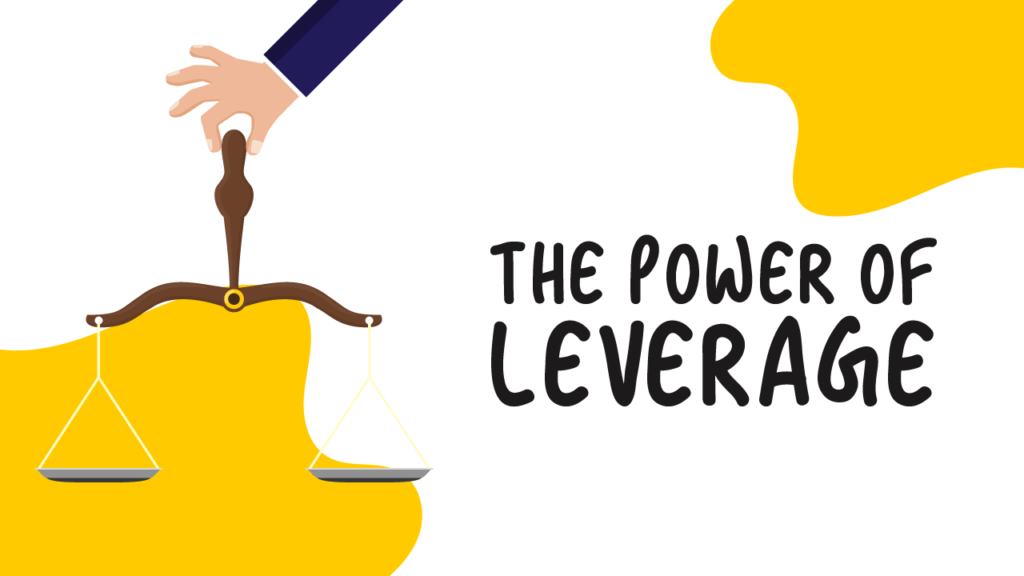Investing in in the Foreign Exchange market (FOREX) requires high volume trading. The 50 US Dollars in your pocket isn’t going to cut it. Think of it logically, if you have 50 US Dollars and you want to exchange it for Euros at a rate of 1.22000, a 1 pip or even 10 pip change in price will not yield you any noticeable profit. Here’s some simple math for you:
| Your Investment | 50 USD |
| EURUSD Rate | 1.22000 |
| You Receive (EUR) | 40.98 EUR |
| New EURUSD Rate | 1.22010 |
| New USD Value: | 50.004 |
(Initial Investment/Execution Rate) x Closing Rate = Final Balance
(50/1.22000) x 1.22010 = 50.004
In this case, your profit is only a fourth of a cent. So, how, you ask, do you make money off of the Foreign Exchange market? The answer is a beautiful mechanism called leverage. Many of you may encounter this only understanding that it applies to your risk appetite, so let’s break it down for you. You may have heard that 1:100 is if you want low risk trading, and 1:1000 leverage is for high risk but high profitability trading. While the concept is simple to grasp, we’ll go into more depth into what you’re getting for leverage.
WHAT IS LEVERAGE?
Simply put, leverage is the amount your broker loans you for your investment. It is key in conducting margin and leverage trading. The amount of money you are borrowing from the broker allows for you to have a higher margin and allows you to open more positions.
HOW DOES IT WORK?
Before we go in depth with the math of leverage, first you must understand the concept of trading volumes. Below is a table for you to understand the different trading volume levels:
| Description | MT4 Volume | Units of Currency |
| Micro Lot | 0.01 | 1,000 |
| Mini Lot | 0.10 | 10,000 |
| Standard Lot | 1.00 | 100,000 |
When you trade on Metatrader 4, volumes are denoted in simple form; therefore, please take note that it represents a certain amount of currency you are trading. For instance, if you open a buy position of 0.01 on EURUSD, you are trading 1,000 units of currency. You may be a bit confused. How is it that when you only have 50 USD in your pockets, you are able to trade 1,000 units of currency? The answer is simple, leverage.
Remember, leverage is the amount of money your broker is loaning to you for your trade. The way it works is that leverages are set to give you a certain amount of money for your dollar value. This can be easily denoted by the leverage level itself. Let’s look at it here:
1:1000 Leverage
In a 1:1000 leverage level, you are given 1,000 units of your base currency for every 1 unit you have. So, for example, if you have 50 USD:
50 x 1,000 = 50,000 USD
Now you can start trading in a manner where you can actually see your profits. Remember that table with all the volumes up above? Now you can trade using large volumes. So, if you have 50,000 USD, you can effectively trade on MT4 a maximum volume of 0.50.
Let’s say you have a lower leverage of 1:100. Then, the calculation is simple. Just as we did above, we multiply 50 USD times 100.
50 x 100 = 5,000 USD
With a balance of 50 USD and a leverage of 1:100, your max allowable trade volume on MT4 is 0.05.
So, what does it mean when people say that it’s a double-edged sword? What does it mean when people say that higher leverage can lead to higher losses or higher profits? It all boils down to you as a trader and how you trade. Leverage is simply a tool in your toolbox that allows you to trade higher or lower volumes. If you have a 1:1000 leverage, you can trade higher volumes, but if you choose to still trade lower volumes with a high leverage, the effect is just same as trading low volumes on a lower leverage.
Therefore, regardless of what leverage you hold, risk appetite is up to you. You’re in control of your own trading. You can either trade high volumes and have a higher risk or trade low volumes with a lower risk. At the end of the day, leverage allows for you to do so.


